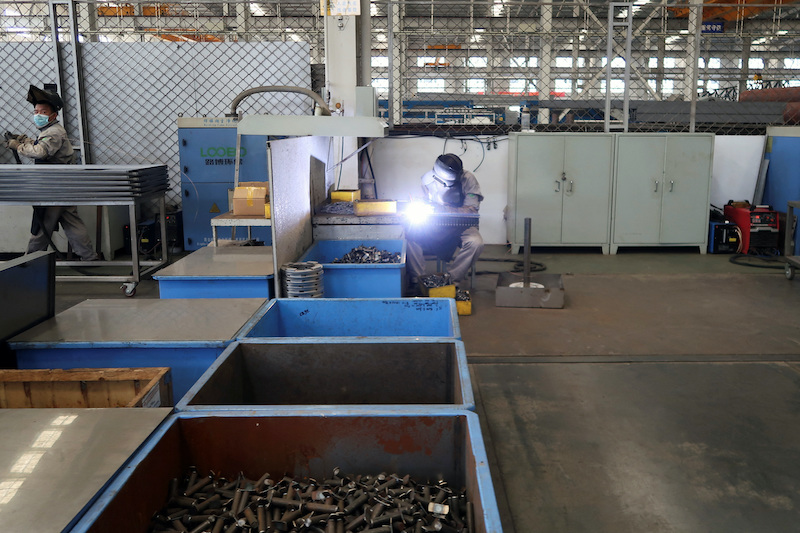Profits at China’s industrial firms slumped for a fourth straight month in April, down 18.2% year-on-year, official data showed.
Profits fell 20.6% in January-April from a year earlier, compared with a 21.4% decline in the first three months, according to data from the National Bureau of Statistics (NBS). Profits shrank 19.2% in March.
Data from the NBS, which only occasionally gives monthly figures, suggests companies in China continue to struggle with margin pressures and soft demand amid a faltering economic recovery.
Also on AF: Patriotic Buyers Pump China Stocks Hit by US, Japan Sanctions
“Overall, today’s data shows that industrial enterprises, especially private and equity-owned enterprises, continue to be affected by a combination of unfavourable factors such as the base effect, short-term pressure on the economic recovery and the downward trend of PPI (producer prices),” said Bruce Pang, chief economist at Jones Lang Lasalle.
Chinese companies are struggling with both weak demand at home and softening demand in the country’s major export markets.
Producer deflation deepened in April, with the producer price index (PPI) falling at the fastest clip since May 2020.
Lenovo, the world’s largest PC maker, said this week that quarterly revenue and profit tanked in January-March. The Chinese firm said it had cut 8% to 9% of its workforce to reduce costs, as global demand for personal computers (PCs) continued to slump.
Industrial profit numbers cover firms with annual revenues of at least 20 million yuan ($2.89 million) from their main operations.
Foreign firms saw their profits slide 16.2% in January-April from a year earlier, while private-sector firms recorded a 22.5% plunge, according to a breakdown of the data.
Profits sagged for 27 of 41 major industrial sectors during the period, with the ferrous metal smelting and rolling processing industry reporting the biggest slump at 99.4%.
Industrial metals under pressure
Producers of steel and other industrial metals are also hurting. Prices for steel reinforcing bars used in construction hit the lowest level in three years this week, affected particularly by ongoing weakness in the property sector.
Only a third of China’s steel mills are currently operating at a profit, according to consultancy Mysteel.
“There is still some pressure felt in May due to the difference between the purchase and sales prices, with steel prices falling in the month because of the slower-than-expected demand recovery,” Baosteel, a subsidiary of the world’s largest steelmaker-China Baowu Steel Group, said in an investor interactive platform on May 22.
China growth projections slashed
In the next stage, China will focus on restoring and expanding demand, further improve the level of production and marketing, and boost business confidence, NBS statistician Sun Xiao said.
The grim profit readings came after a batch of April economic indicators, spanning industrial output, retail sales and property investment, suggested that a recovery in the world’s second-largest economy is losing momentum.
Beijing has set a modest growth target of around 5% for this year. Signs of a brisk recovery in the wake of the country’s abrupt end of Covid curbs late last year had prompted many institutions including the World Bank to raise their China growth estimates for 2023.
Nonetheless, some investment banks have recently lowered their 2023 China growth forecasts after the April data disappointment, with Nomura ratcheting down its prediction to 5.5% from 5.9% previously and Barclays revising its view down to 5.3% from 5.6%.
Earlier this month, Premier Li Qiang vowed more targeted measures to expand domestic demand and stabilise external demand in an effort to promote a sustained economic rebound.
- Reuters, with additional editing by Vishakha Saxena
Also read:
US, China Ministers Hold ‘Candid’ Talks on Trade Concerns
China Freezes Lending Rates, Weak Yuan Dashes Easing Hopes
China’s Super Rich Suffer as Tech Crackdowns, Covid Costs Hit
China’s $1.5trln Brokerage Sector Set For More Pain – SCMP
Millions Hit as Second Covid Wave Spreads in China – Caixin
























